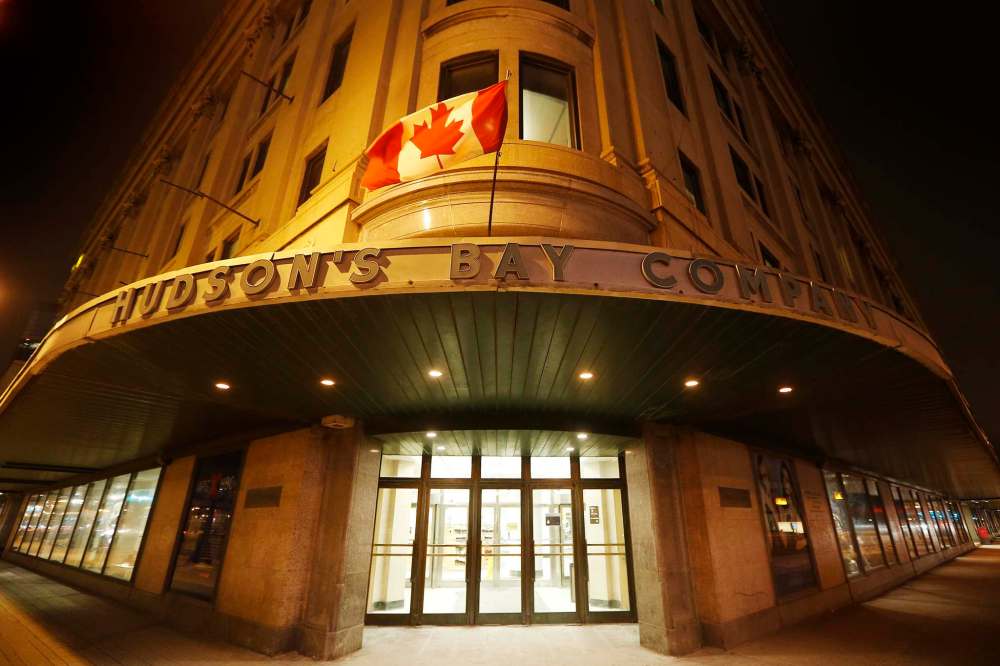Ottawa can help preserve two Manitoba treasures
Advertisement
Read this article for free:
or
Already have an account? Log in here »
To continue reading, please subscribe:
Monthly Digital Subscription
$1 per week for 24 weeks*
- Enjoy unlimited reading on winnipegfreepress.com
- Read the E-Edition, our digital replica newspaper
- Access News Break, our award-winning app
- Play interactive puzzles
*Billed as $4.00 plus GST every four weeks. After 24 weeks, price increases to the regular rate of $19.00 plus GST every four weeks. Offer available to new and qualified returning subscribers only. Cancel any time.
Monthly Digital Subscription
$4.75/week*
- Enjoy unlimited reading on winnipegfreepress.com
- Read the E-Edition, our digital replica newspaper
- Access News Break, our award-winning app
- Play interactive puzzles
*Billed as $19 plus GST every four weeks. Cancel any time.
To continue reading, please subscribe:
Add Winnipeg Free Press access to your Brandon Sun subscription for only
$1 for the first 4 weeks*
*$1 will be added to your next bill. After your 4 weeks access is complete your rate will increase by $0.00 a X percent off the regular rate.
Read unlimited articles for free today:
or
Already have an account? Log in here »
Hey there, time traveller!
This article was published 28/05/2016 (3412 days ago), so information in it may no longer be current.
The Liberal biennial convention provides an opportunity to highlight Winnipeg and Manitoba priorities within a federal context.
Two priorities that share the theme of sustainability are Lake Winnipeg and the downtown Bay building. Both are Manitoba treasures that have the potential to establish the city and province as leaders in innovation and sustainability practices.
Lake Winnipeg, the world’s 10th-largest freshwater lake, is in ecological peril. Recurring algal blooms resulting from decades of excessive nutrient loading, as well as the recent introduction of zebra mussels, underscore continued erosion of the health of the lake.

Lake Winnipeg is also central to Manitoba’s economy through commercial fishing and tourism. In keeping with the current federal government’s recognition that the environment and economy are inseparable, the Lake Winnipeg Foundation, in its Lake Winnipeg health plan, has advocated for investment in a clean-water economy.
With a watershed that spans four provinces and three states, the health of Lake Winnipeg is a national and international issue of concern. The federal government has a critical role to play in providing leadership to address interprovincial issues associated with water quality and quantity. Goals would include initiatives to reduce nutrient loading to Lake Winnipeg, continued promotion of public education and involvement by the International Joint Commission, scientific research and water-quality and quantity monitoring that is essential for First Nations communities.
In keeping with a vision predicated on sustainability, the Bay building, a magnificent structure at the corner of Portage Avenue and Memorial Boulevard, is a national landmark with a future that remains uncertain. Ironically, while HBC introduces Canada and its history to Europe via its signature merchandise and 20 new stores in the Netherlands, a building central to the Hudson Bay enterprise and history of Canada languishes. As former Manitoba justice Charles Huband recently noted, reviving the Bay as a modern urban mall would restore downtown shopping and promote tourism locally.
The Bay and its redevelopment are a Winnipeg/Manitoba priority in the context of downtown revitalization, green infrastructure and the Canada 150 celebrations. This iconic building and its future highlight the importance of heritage preservation to the history and identity of Canadian municipalities. Canada needs a federal heritage tax-credit program that encourages refurbishment and restoration of national legacy buildings.
Assessments show historic preservation yields greater economic, environmental and social benefits than new development. Investment in heritage preservation and building restoration yields more jobs than in other sectors. Additional benefits include an increase in property values, savings in materials, energy and reductions in greenhouse gas emissions. Heritage tourism and revitalized downtown cores stimulate local economies and trades.
With federal investment in green infrastructure projects announced in the spring budget, now is an opportune time to recognize heritage preservation and redevelopment of the Bay as an urban mall as an ideal candidate for this support.
Both Lake Winnipeg and the Bay have the potential to establish the city and province as leaders in sustainability. A comprehensive action plan for the Lake Winnipeg watershed would enable integration of climate change, water quality and quantity initiatives. Restoration of the Bay would enable integration of environmental, economic and social-sustainability initiatives to revitalize Winnipeg’s downtown core. Investment in both Lake Winnipeg and the Bay would contribute to the provincial economy.

The biennial convention provides an opportunity for Manitoba to speak to Canadian neighbours and citizens about a vision for Canada in a Manitoba context. This is a call for delegates to support the Lake Winnipeg resolution and development of an action plan in the form of nutrient targets and freshwater-management strategy for Lake Winnipeg and its watershed, and to encourage non-Manitoban delegates to witness the majesty of the Bay building at the corner of Portage and Memorial and its potential to revitalize downtown as a cultural, social and environmental hub.
And to let Manitoba’s voice, and that of its citizens, be heard.
Jennifer Verlaine Lukovich is a research scientist in climate change in the Arctic at the Centre for Earth Observation Science, University of Manitoba.



